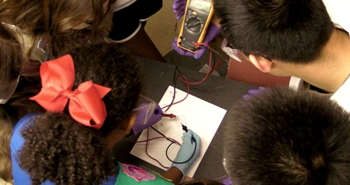Rice University students have proved that a single-atom-thick graphene sheet can be developed from any source containing carbon, even from cookies, waste materials and insects. The team was headed by a chemist called James Tour.
 Rice University student developing Graphene
Rice University student developing Graphene
In order to visualize the process, a group from Girl Scouts of America Troop 25080 visited Rice's Smalley Institute for Nanoscale Science and Technology. Two graduate students, Zhengzong Sun and Gedeng Ruanand estimated that since the present commercial rate of 2” pristine graphene square cost about $250, a shortbread cookies box can yield a profit of $15 billion. According to Sun, a graphene sheet created from a single box of shortbread cookies measures approximately the area of 30 football grounds.
Several type of materials such as polystyrene plastic, grass, chocolate and even dog feces and insects, for example, the leg of a cockroach, were tested by the researchers to demonstrate their study. In all the cases, they obtained high-quality graphene through deposition of carbon on copper foil. When sources containing solid carbon decompose, graphene is produced on the opposite side of the copper foil. The remaining residues are collected on the original side. This process completes in just 15 minutes in a furnace with a temperature increased up to 1,050°C by the flow of hydrogen and argon gas.
Tour anticipates that due to commercial interests, by introducing techniques to produce graphene in huge volumes, graphene’s cost may decrease rapidly. Tour and his team have described in another research paper about a long-sought method to develop transparent electrodes that are graphene-based by coalescing graphene with a fine mesh of aluminum. The expensive key element, indium tin oxide used in solar cells displays, LED lighting, flat-panel, and touch-screen may be replaced by this new material.